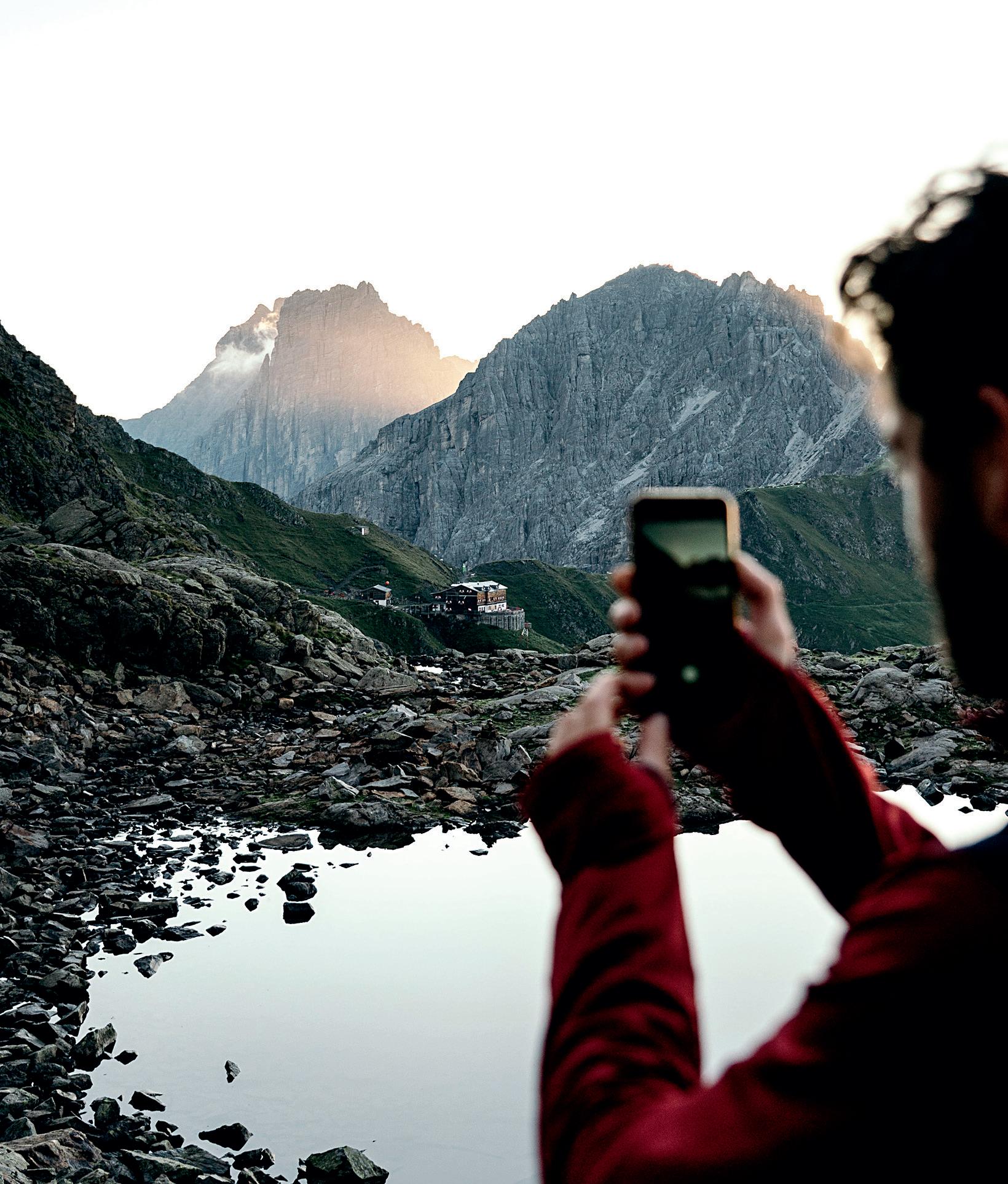
3 minute read
STORIES FROM THE STUBAI HIGH TRAIL
The Stubai High Trail is a high-alpine adventure for experienced hikers. The innkeepers in the huts know what their guests need and can tell many a story from their everyday life in the huts.
STARKENBURGERHÜTTE: OH SOLE MIO
Tell me, did you put glue on the path so I’m left standing here without any soles?
Hiker at the Starkenburgerhütte
The Stubai High Trail stages lead from hut to hut. Each hut has its own charm and breathtaking views, where you will find down-to-earth Austrian cooking, as well as an opportunity to rest, chat and listen to the locals’ stories. The eight huts on the Stubai High Trail are alpine meeting places for (high-altitude trail) hikers, alpinists, climbers, day trippers, families, etc. Some of the innkeepers have been at ‘their’ hut every summer since childhood. They know what their guests need and can tell many a story from their everyday life in the Stubai mountain huts.
Karin, the long-time innkeeper at the Starkenburgerhütte, reports a conspicuous accumulation of lost soles on the path between the Schlick 2000 top station and the Starkenburgerhütte. One or two high-altitude hikers regularly ask in bewilderment: “Tell me, did you put glue on the path so I’m left standing here without any soles?” It happens though because some hikers have not used their hiking boots for a long time. Sometimes they even store their mountain boots for years and only take them out of the cellar again for the Stubai High Trail. The glue between the boot and the tread sole can become porous, especially in rooms that are too warm. On the first stage of the Stubai High Trail between the Schlick 2000 cable car and the Starkenburgerhütte, this equipment fault then comes to light. The sole comes off the boot. Basically, mountain boots should be protected regularly and stored in cool rooms. Karin also recommends that all guests test their mountain boots at home before using them on a hiking holiday. Of course, the innkeeper also comes to their assistance if the mishap has already occurred. “Our shoe retailers in the Stubai Val- ley have often sent a new pair of mountain boots to our hut so high-altitude hikers could continue their hike,” says Karin helpfully.
SULZENAUHÜTTE: LOOK AT MY SHOES, SIGMAR


Innkeeper Susanne tells us how her husband once whispered to her, “What big feet she has,” when a hiker entered the Sulzenauhütte. “The things you notice,” the innkeeper was taken aback by her husband’s comment, who had worked as a shoe salesman for several years. The observation proved to be spot on a bit later though when a desperate high-altitude hiker called from the Dresdnerhütte, a three-hour walk away. The caller’s hiking boots, which had been stored in the Dresdnerhütte’s boot room, were suddenly much too small. Host Sigmar immediately spoke to the ‘lady with the big feet’. The woman had probably noticed on her hike from the Dresdnerhütte to the Sulzenauhütte that her hiking boots had offered a surprising amount of room for movement. But it had not occurred to her that she had mixed up her walking boots. Sigmar solved the slip-up by transporting the woman’s hiking boots, which were too big, down to the valley on the goods cable car. The hiker from the Dresdnerhütte was able to swap his mountain boots for the woman’s too-small pair, and Sigmar transported the female hiker’s mountain boots back to the Sulzenauhütte with the goods cable car. Now they could both continue their hikes with the right footwear.
INNSBRUCKERHÜTTE: CRAMPONS
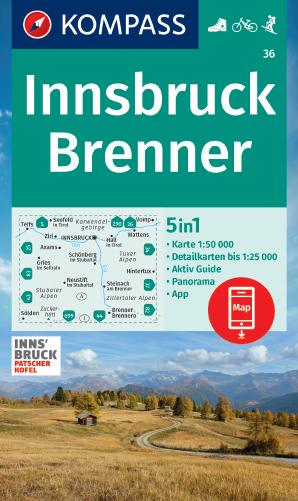
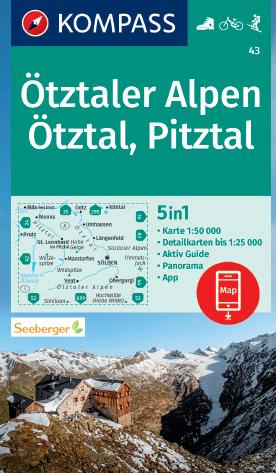
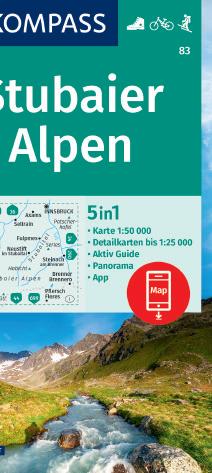

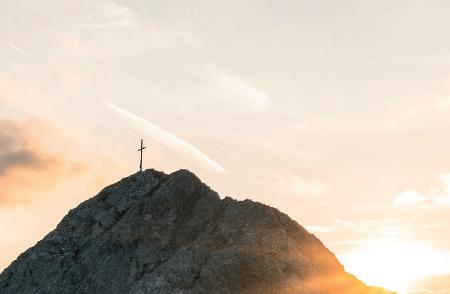
Marlene, the innkeeper at the Innsbruckerhütte, heard loud scratching noises from the hallway in front of her restaurant. When she got to the bottom of the scraping and shuffling, she came across a hiker who had entered the refuge dressed in high Alpine gear: helmet, climbing rope over his shoulder, ice axe in his hand and – Marlene couldn’t believe her eyes – crampons, or ‘Steigeisen’ in German, on his shoes. On closer inspection, Marlene noticed that all kinds of pieces of gravel, small stones and the odd mountain pine branch had got caught on the crampons. In disbelief, the hostess asked the hiker why he was wearing crampons. The guest readily replied that he had already put them on just after the Karalm. When asked why on earth he put the crampons on at the Karalm, the hiker replied: “Well, there is a signpost there that says ‘Steig zur Innsbruckerhütte’.” The guest had interpreted this as an unmistakable pointer that he should put his freshly purchased crampons, or ‘Steig’-Eisen, on as soon as possible.
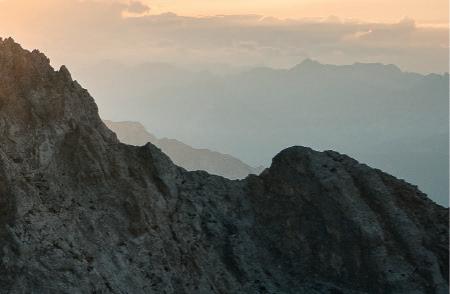
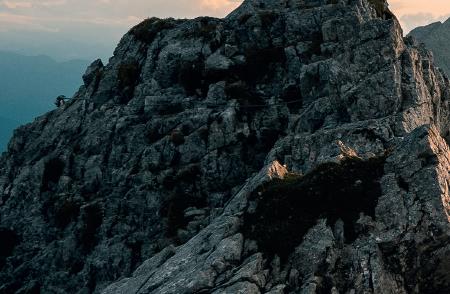

By the way: crampons are used to move safely over glaciers and ice. For glacier tours we recommend that you rely on a mountain guide. The Stubai High Trail does not cross any glacier areas.










